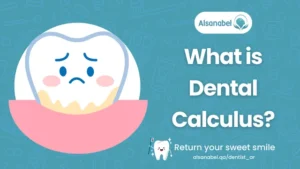
Dental calculus, also known as tartar, is a hardened plaque that forms on the teeth when bacteria and minerals in saliva accumulate over time. Unlike soft plaque, which can be removed by regular brushing and flossing, dental calculus is much more difficult to eliminate. If left untreated, it can contribute to gum disease, cavities, and bad breath.
Many people wonder whether dental calculus removal at home is possible and whether there are safe and effective methods to reduce tartar buildup without professional dental intervention. While some DIY tartar removal methods can help prevent and minimize buildup, professional cleanings remain the most effective way to remove stubborn deposits.
In this article, we will explore how to remove tartar at home, discuss the best natural remedies for dental plaque, and determine when it is necessary to visit a dentist for treatment.
What is Dental Calculus?
Dental calculus forms when plaque (a sticky film of bacteria and food particles) hardens due to the minerals in saliva. Over time, tartar builds up along the gumline, creating rough surfaces where more plaque accumulates. This can lead to gum inflammation, tooth decay, and even periodontal disease.

Unlike plaque, which can be removed by daily brushing and flossing, tartar requires more effort to eliminate, and in many cases, professional dental cleanings are necessary. However, there are some dental calculus removal at home methods that may help reduce or prevent buildup before it hardens completely.
Can Dental Calculus Be Removed at Home?
Can dental calculus be removed at home?
While some home remedies can help soften and reduce tartar formation, fully removing hardened calculus requires professional dental tools and techniques.
However, preventative care and natural remedies can slow down tartar formation and minimize its effects. Using DIY tartar removal methods consistently may help prevent excessive buildup, reducing the risk of gum disease and cavities.
How to Remove Tartar at Home: Best Natural Remedies
If you’re looking for how to remove tartar at home, several natural and safe methods can help prevent and minimize buildup. These methods do not replace professional cleanings but can support good oral hygiene.
1. Baking Soda for Plaque and Tartar Removal
How does baking soda help remove plaque?
Baking soda is mildly abrasive, making it effective at scrubbing away soft plaque before it turns into hard calculus. Additionally, baking soda helps neutralize acidity in the mouth, reducing bacterial growth.
How to use baking soda for tartar removal:
- Mix 1 teaspoon of baking soda with a few drops of water to form a paste.
- Brush your teeth with this mixture for 2 minutes, paying extra attention to the gumline.
- Rinse thoroughly with water.
- Use 2–3 times a week to prevent enamel damage.
2. Apple Cider Vinegar for Tartar Reduction
Does apple cider vinegar remove tartar?
Apple cider vinegar contains acetic acid, which has antibacterial properties that may help loosen plaque. However, it is highly acidic and can erode enamel if used excessively.
How to use apple cider vinegar safely:
- Mix 1 tablespoon of apple cider vinegar with half a cup of water.
- Swish the mixture in your mouth for 30 seconds, then rinse with plain water.
- Use only once or twice a week to avoid enamel erosion.
3. Oil Pulling for Plaque Reduction
Oil pulling is an ancient Ayurvedic practice that involves swishing oil in the mouth to reduce bacteria and plaque buildup.
How to do oil pulling:
- Take 1 tablespoon of coconut oil and swish it around in your mouth for 15–20 minutes.
- Spit out the oil and rinse your mouth with warm water.
- Follow with regular brushing.
4. Orange Peel Rub for Tartar Prevention
Orange peels contain vitamin C and antimicrobial properties that may help reduce plaque bacteria.
How to use orange peel for tartar removal:
- Take a fresh orange peel and rub the inside against your teeth and gumline for 2 minutes.
- Rinse with water or brush as usual.
5. Hydrogen Peroxide for Plaque Control
Hydrogen peroxide has mild antibacterial properties and can help prevent plaque buildup.
How to use hydrogen peroxide safely:
- Mix equal parts of 3% hydrogen peroxide and water.
- Swish in your mouth for 30 seconds, then rinse with plain water.
- Use once or twice a week to avoid irritation.
Is It Safe to Scrape Off Tartar at Home?
No, attempting to scrape off tartar at home is not recommended.
- Using sharp objects or metal tools can damage enamel and injure gums, leading to infections.
- Improper scraping can cause gum recession, increasing tooth sensitivity and decay risk.
- Professional dentists use specialized instruments to safely remove tartar without harming the gums and teeth.
If you suspect significant tartar buildup, schedule a professional dental cleaning instead of attempting DIY tartar removal with sharp tools.
Best Practices to Prevent Tartar Buildup
Since dental calculus removal at home is difficult once tartar has hardened, the best approach is prevention. Here are some best practices to maintain a clean and tartar-free smile:
1. Brush Your Teeth Twice a Day
- Use a fluoride toothpaste and a soft-bristled toothbrush.
- Brush for at least 2 minutes each time.
- Pay extra attention to the gumline and back molars, where plaque builds up.
2. Floss Daily
- Flossing removes plaque between teeth, preventing tartar formation.
- Use waxed or unwaxed floss, or try a water flosser if traditional flossing is difficult.
3. Use an Antibacterial Mouthwash
- Mouthwash helps kill bacteria and reduce plaque buildup.
- Choose one with chlorhexidine, cetylpyridinium chloride, or essential oils.
4. Eat a Tartar-Fighting Diet
- Crunchy fruits and vegetables, such as apples, celery, and carrots, help clean teeth naturally.
- Avoid sugary and starchy foods that contribute to plaque buildup.
5. Visit Your Dentist Regularly
- Schedule dental cleanings every six months for professional tartar removal.
- If you have significant tartar buildup, consider more frequent cleanings.
Frequently Asked Questions About Tartar Removal

1. Can dental calculus be removed at home?
No, once dental calculus hardens, professional cleaning is required. However, at-home methods can prevent and reduce plaque before it turns into tartar.
2. What are the best home remedies for tartar buildup?
Effective natural remedies for dental plaque include baking soda, apple cider vinegar, oil pulling, and hydrogen peroxide rinses.
3. How does baking soda help remove plaque?
Baking soda is a mild abrasive that gently removes plaque and neutralizes acids, preventing bacterial growth.
4. Does apple cider vinegar remove tartar?
Apple cider vinegar can help loosen plaque, but it should be used sparingly to avoid enamel erosion.
5. Is it safe to scrape off tartar at home?
No, using sharp tools to scrape tartar can damage enamel and gums, leading to infections and increased sensitivity. Professional cleaning is the safest option.
While dental calculus removal at home is not entirely possible once tartar has hardened, following natural remedies for dental plaque and practicing good oral hygiene can prevent excessive buildup. Understanding how to remove tartar at home and implementing DIY tartar removal methods safely will help maintain a clean, healthy smile. However, for significant tartar accumulation, it is always best to seek professional dental care.
%20(2).jpg)
